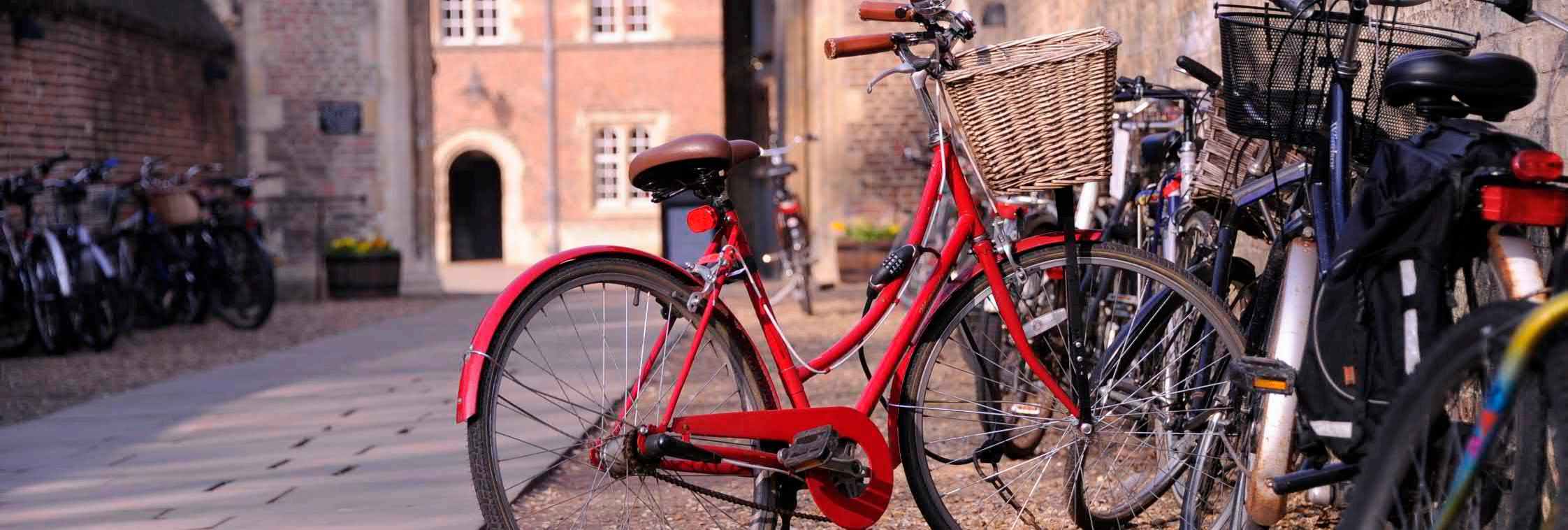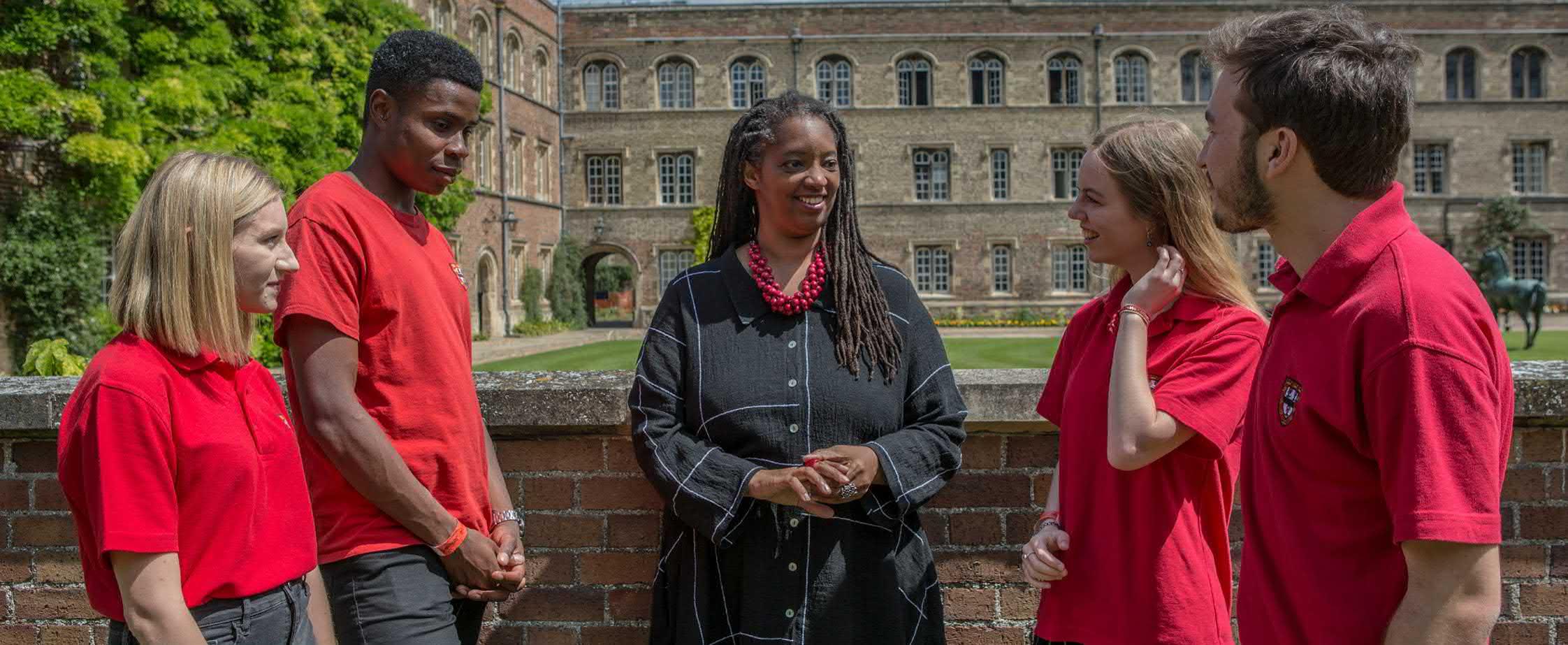
4 minute read
SDG 9 Industry, innovation and infrastructure
We have a responsibility to develop our estate sustainably with regard to transport, energy, information and communication technology, respecting our surroundings and the local economy. Established in 1496, our estate includes examples of architecture from the 12th to the 21st centuries. Many of the properties contribute to the rich heritage of the city, and are listed as Grade I and Grade II. Any developments must respect the heritage of the College and the city, to preserve their unique places in history.
Cambridge is unusual for the UK in that a large proportion of student and staff travel associated with work and study is by foot and bicycle. However, development of the Addenbrooke’s and West Cambridge sites, as well as the cost of housing in the Cambridge area, means that the need for sustainable transport is growing.
What have we done so far?
Transport
Every year we participate in an annual survey on transport, carried out by Cambridgeshire City Council. This project, Smart Journeys, maps out how far people travel to work and whether public transport options are available to them. The results of the most recent survey (2019, as 2020 was skipped due to the COVID-19 pandemic) show that 48% of staff drive alone to work (below the national average) and 57% of the total surveyed would consider an alternative to driving.
The College has been part of the Government’s ‘Cycle to Work’ scheme since 2010. We have recently increased the amount of bicycle storage available onsite, as well as making shower, changing and laundry facilities available to encourage more people to cycle to work.
Building development
For all new developments, the College performs life-cycle analyses to assess the environmental and socioeconomic impacts on the local environment. An example of this was the design of West Court, which provides a venue for academic symposia, conferences, lectures and debates. It includes a beautiful dining room, a café bar and pavilion with adjoining terraces, and a private events space. West Court opened in 2017 and has already gained Venues of Excellence accreditation, awarded for high standards across areas including environmental impact.
We recently invited students from the Cambridge Institute for Sustainability Leadership to review individual properties and share their recommendations. Among the planned developments discussed was Elm Street Living, which we propose to build within the Kite Conservation Area in the historic centre of Cambridge. The students’ recommendations were consistent with the brief we provided to the architect, and included reference to the use of recyclable materials and provision of a high standard of sustainable living with net carbon zero emissions. The inclusion of courtyard gardens, cycle storage and communal spaces all contribute to a design that complements the existing architecture of the local area.
The students also made recommendations for infrastructure and transport improvements to the Waterhouse Building, which we plan to develop in the coming years. They suggested we enlarge the current cycle storage and make it lockable, install a solar PV carport with integrated car chargers and dedicated car-pooling spaces in the car park, and instigate step challenges across the College community to promote walking.
Information and communication technology
Developments in our use of information and communication technology have been accelerated by the COVID-19 pandemic. As a community, we are learning how to work together remotely. This will have long-lasting benefits in our plans for the future, particularly in reducing Scope 3 emissions.
What are our plans?
As part of a clear transport strategy, we will promote and incentivise use of public transport, bike riding and park and ride services. We are also following the University transport working party initiatives, with a view to updating our parking eligibility, and inspiring change within the College.
Including sustainability considerations in the choice of transport for academic activity is likely to require behavioural change for students, staff and Fellows. Many funding bodies are introducing such criteria. We will encourage each group to consider how sustainability can be included in their choices, and promote the incorporation of sustainability criteria in College-supported activities.
COVID-19 has accelerated discussions around flexible working, and we are exploring the possibilities for the future. For example, if administration-based staff all worked one day per week from home, our transport (Scope 3) emissions would reduce considerably. Exploring flexible working hours and promoting offpeak travel to work, complemented by working at home, will reduce both congestion at peak times and journey times. Virtual meeting for other activities is also being considered. Planning permission has now been granted for eight properties in Elm Street. We are able to incorporate some of the measures suggested by the CISL students, many of which were part of the original designs. All the homes will have triple glazing, no gas, additional insulation and the materials used will be recyclable at the end of their life. Bike parking exceeds planning requirements, and electric bike charge points will be installed in courtyards where bikes will be stored. The properties on Elm Street will therefore generate zero Scope 1 emissions. Scope 2 emissions will be as low as possible from the start, and the designs will encourage behavioural change towards reducing Scope 3 emissions.
Aims and targets
• Begin a consultation on transport, to include all constituents of the College community, with a view to launching a transport strategy in 2022.
• Achieve and maintain 60% of staff and Fellows using sustainable transport as their primary mode of transport when travelling to work by 2026.
• Commencing in 2022, launch a fifteenyear capital investment plan to improve the performance of our infrastructure, including electric, water, heating, insulation and waste initiatives.
• Engage with university stakeholders to capture and share data and scientific evidence to influence environmental initiatives to maximise the impact of innovation.











